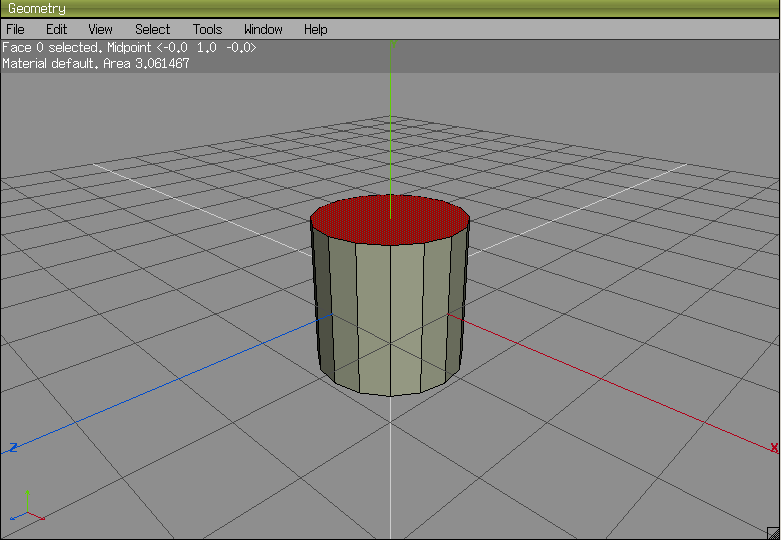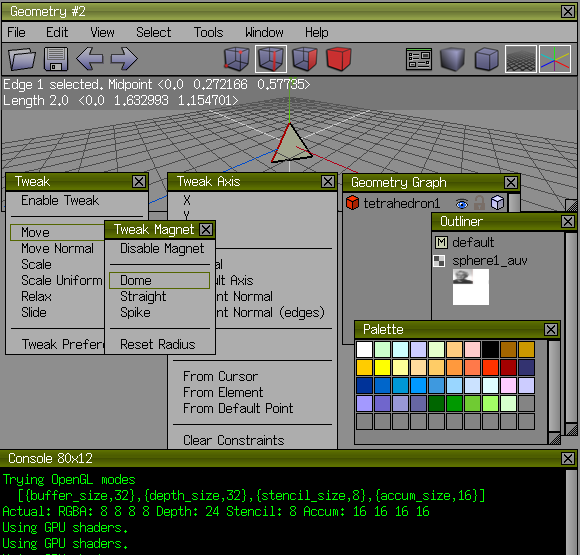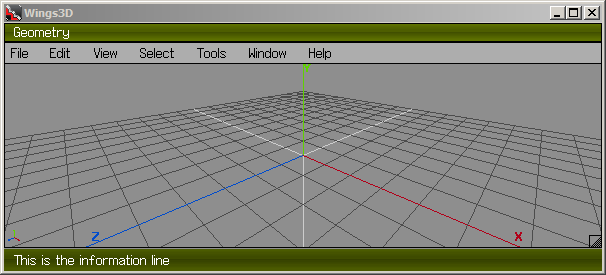WINGS 3D PROGRAM WINDOW
At the top of the Wings 3D program window is the Title Bar, and along the bottom is the Information Line. Between the two lies the Wings 3D Workspace displaying the primary Geometry window where your model scene is displayed and worked on.
Title Bar
The Title Bar is labelled “Wings3D”, or, if there is a previously saved model open, it displays the file name of the model.
When a file is auto-saved, the Title Bar shows that the file has been auto-saved. At the far right are the standard desktop widgets for Minimize, Restore, and Close.
Information Line
The Information Line runs along the bottom of the main Wings 3D program window.
![]()
This is worth keeping your eye on, especially if you are new to Wings 3D. The main purpose of the Information Line is to display the mouse button options available for the currently highlighted or active operation, tool, or menu item.
Many of the tools and menu options have more than one function, and some of the more advanced options are only displayed in the Information Line. To use the Information Line to display a menu item’s possible options or described function, simply hover over the item with the mouse cursor.
The Information Line uses the letters L, M and R for the left, middle and right mouse buttons, respectively.
When several options are available for a tool, menu item, or during an operation, those options are displayed in the Information Line preceded by L, M, or R. Sometimes the user will be prompted to depress one or more Modifier Keys (e.g. Shift) in combination with the designated mouse button.
Note: There are other instances when numeric or other keys are used to toggle options. In cases where numeric keys are used to change the result of a command, the numeric keypad may be treated differently by your system. For numeric key modifiers displayed in the information line, use the numeric keys across the top of your keyboard instead.
The Wings 3D Workspace
The Wings 3D Workspace opens with the primary Geometry window at its core.
This primary Geometry window is your main work area will always remain in view.
Secondary Geometry windows can be created (see [Window | New Geometry Window]) and can be used to show alternative views, or camera angles, of the modeled scene.
Other Windows in the Workspace
As your work progresses, other Wings 3D windows may be opened to access other tools or settings for the Wings 3D workspace. These include the Outliner and Geometry Graph which are the ones you are likely to use most.

These other windows can take up space, or just get in the way of your creative work, so they can be rolled-up and switched on/off as required. All these windows can be individually moved, re-sized, and (all but the primary Geometry window) can be closed.
